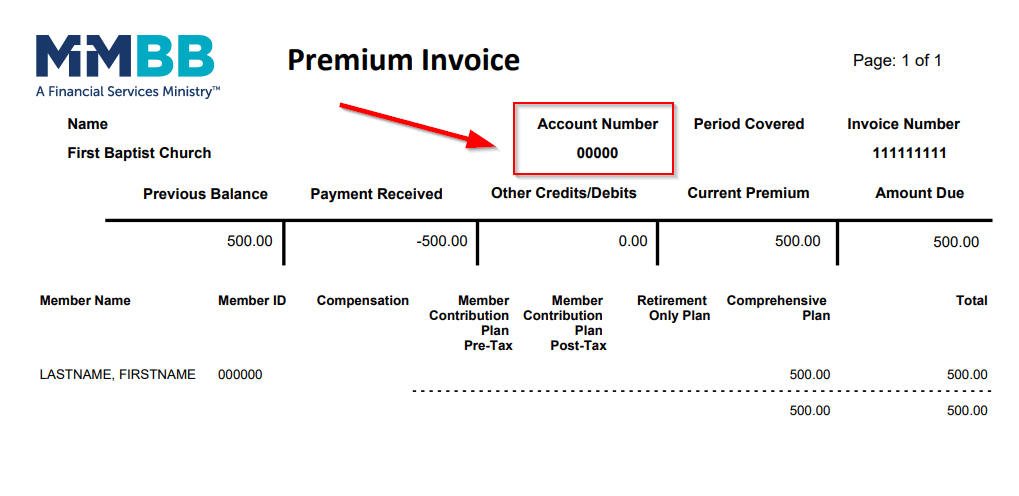The Markets (as of market close October 31, 2022)
October saw stocks close higher, the first monthly gain since July. Investors were encouraged by hopes that the Federal Reserve will pull back from its aggressive interest-rate hike policy. In addition, solid third-quarter earnings could be a sign that the economy can withstand the battle to lower inflation. Each of the benchmark indexes listed here posted notable gains, led by the Dow, which rose nearly 14.0%. The Russell 2000 gained about 11.0%, followed by the Global Dow, the S&P 500, and the Nasdaq.
After two consecutive quarters of retractions, the economy expanded at an annualized rate of 2.6% in the third quarter. Personal spending, which accounts for nearly 70% of the economy, increased 1.4% in the third quarter. A strong labor market and ample savings have supported consumer spending. The Treasury deficit for fiscal year 2022 was nearly half the total of the previous fiscal year. Industrial production increased, as did new orders for durable goods. However, not all economic indicators were positive. The housing sector continued to lag, impacted by rising mortgage interest rates. Inflation indicators, which had shown a decline in August, reversed course in September. The personal consumption expenditures price index and the consumer price index increased.
Crude oil prices notched their first monthly gain since June, following the largest cut in output by OPEC since the pandemic, further straining global supplies. Crude oil prices settled at around $86.10 per barrel, up over 8.0% from August. Gas prices, which had fallen during the summer months, reversed course somewhat in October. The national average retail price for regular gasoline was $3.769 per gallon on October 24, up from $3.569 on September 26 and $0.386 higher than a year ago.
Bond prices fell in October, pushing yields higher. Ten-year Treasury yields climbed 27 basis points, likely in anticipation of a continuation of the Fed's aggressive monetary policy. The dollar slid lower against a basket of world currencies. Gold prices fell in October, the seventh consecutive month of declining prices.
MARKET SUMMARY
| MARKET/INDEX |
2021 CLOSE |
PRIOR MONTH |
AS OF 10/31 |
MONTHLY CHANGE |
YTD CHANGE |
| DJIA |
36,338.30 |
28,725.51 |
32,732.95 |
13.95% |
-9.92% |
| NASDAQ |
15,644.97 |
10,575.62 |
10,988.15 |
3.90% |
-29.77% |
| S&P 500 |
4,766.18 |
3,585.62 |
3,871.98 |
7.99% |
-18.76% |
| RUSSELL 2000 |
2,245.31 |
1,664.72 |
1,846.86 |
10.94% |
-17.75% |
| GLOBAL DOW |
4,137.63 |
3,168.34 |
3,432.62 |
8.34% |
-17.04% |
| FED. FUNDS |
0.00%-0.25% |
3.00%-3.25% |
3.00%-3.25% |
0 bps |
300 bps |
| 10-YEAR TREASURIES |
1.51% |
3.80% |
4.07% |
27 bps |
256 bps |
| US DOLLAR-DXY |
95.64 |
112.17 |
111.58 |
-0.53% |
16.67% |
| CRUDE OIL-CL=F |
$75.44 |
$79.67 |
$86.10 |
8.07% |
14.13% |
| GOLD-GC=F |
$1,830.30 |
$1,670.50 |
$1,635.70 |
-2.08% |
-10.63% |
Chart reflects price changes, not total return. Because it does not include dividends or splits, it should not be used to benchmark performance of specific investments.
Latest Economic Reports
- Employment: Employment rose by 263,000 in September, down from the August increase of 315,000. Monthly job growth has averaged 420,000 thus far in 2022. In September, job gains occurred in leisure and hospitality and in health care. The unemployment rate edged down to 3.5% in September (3.7% in August), and the number of unemployed persons decreased by 261,000 to 5.8 million. Among the unemployed, the number of workers who permanently lost their jobs decreased by 173,000 to 1.2 million in September. Among that group, the number of persons who were unable to work because their employer closed or lost business due to the pandemic fell to 1.4 million, down from 1.9 million in August. In September, 5.2% of employed persons teleworked because of the pandemic, down from 6.5% in the prior month. By comparison, in May 2020, the first month these data were collected, 35.4% of employed persons teleworked because of the pandemic. The labor force participation rate increased by 0.1 percentage point to 62.3% in September. The employment-population ratio was unchanged at 60.1%. Both measures are 1.1 percentage point below their February 2020 values prior to the pandemic. In September, average hourly earnings rose by $0.10 to $32.46. Over the 12 months ended in September, average hourly earnings increased by 5.0%. In September, the average work week was 34.5 hours for the fourth month in a row.
- There were 217,000 initial claims for unemployment insurance for the week ended October 22, while the total number of insured unemployment claims was 1,438,000 as of October 15. A year ago, there were 294,000 initial claims for unemployment insurance and 2,334,000 total insured unemployment claims.
- FOMC/interest rates: The Federal Open Market Committee did not meet in October. The Committee reconvenes again during the first week of November. It is expected that the FOMC will increase the federal funds target rate range 75 basis points. Throughout October, some members of the Committee have hinted that they may be inclined to slow the pace of interest-rate hikes, possibly beginning in December. However, recent indicators showed inflationary pressures have abated very little.
- GDP/budget: Gross domestic product increased 2.6% in the third quarter, according to the initial, or advance, estimate released by the Bureau of Economic Analysis. The third-quarter increase follows decreases in the first quarter (-1.6%) and the second quarter (-0.6%). The increase in GDP reflected advances in exports; consumer spending; nonresidential (business) fixed investment; and federal, state, and local government spending that were partly offset by decreases in residential fixed investment and private inventory investment. Imports, which are a subtraction in the calculation of GDP, decreased. Consumer spending rose 4.6% in the third quarter after increasing 2.0% in the second quarter. Most of the increase in consumer spending is attributable to a 2.8% jump in services, while spending on durables slid 0.8%. Also dragging down GDP was a 4.9% decline in fixed investment, within which residential fixed investment dropped 26.4%, evidence of the slowdown in the housing sector. Nonresidential fixed investment jumped 3.7% in the third quarter after inching up 0.1% in the previous quarter. Exports rose 14.4% in the third quarter, while imports fell 6.9% after increasing 12.2% in the second quarter. The personal consumption expenditures price index, a measure of inflation, increased 4.2% in the third quarter following a 7.3% increase in the second quarter.
- The Treasury budget deficit came in at $429.7 billion in September, up from $219.6 billion in August and over the September 2021 deficit of $64.9 billion. The deficit for fiscal year 2022, which runs from October through September, was $1.4 trillion, $1.4 trillion lower than the deficit in fiscal year 2021, as outlays dropped $550.0 billion while receipts increased $850.1 billion. For fiscal year 2022, individual income tax receipts increased by $587.8 billion, and corporate income tax receipts increased by $53.0 million.
- Inflation/consumer spending: Inflationary pressures continued to rise in September, despite the Federal Reserve's hawkish policy. The personal consumption expenditures price index, a preferred inflation indicator of the Federal Reserve, advanced 0.3% in September, the same increase as in August. For the year ended in September, prices have increased 6.2%. Prices less food and energy increased 0.5% in September and 5.1% since September 2021. Prices for durable goods dipped 0.1% in September, while prices for nondurable goods rose 0.4%. Prices for services rose 0.6% in September. Food prices increased 0.6%, while energy prices fell 2.4%. Consumer spending, impacted by rising prices, increased 0.6% in September. Spending on goods increased 0.6%, while consumer spending on services advanced 0.8%. Personal income and disposable (after-tax) personal income rose 0.4% in September. Wages and salaries increased 0.6% in September, doubling the August advance.
- The Consumer Price Index rose 0.4% in September following a 0.1% increase in August. For the 12 months ended in September, the CPI increased 8.2% (8.3% for the 12-month period ended in August). Both the monthly and 12-month rates were above expectations. In September, the CPI less food and energy rose 0.6% (the same increase as in August) and 6.6% since September 2021. Price increases were broad-based in September, with the largest advances occurring in transportation services, medical care services, shelter, new vehicles, energy services, and food. These increases were mostly offset by declines in energy prices, used cars and trucks, and apparel.
- Prices that producers receive for goods and services rose 0.4% in September following a 0.2% decline in August. Despite the recent downturn, producer prices have increased 8.5% since September 2021 (8.7% for the 12 months ended in August). Prices less foods, energy, and trade services increased 0.4% in September and 5.6% since September 2021. The September prices for both goods and services increased 0.4%. Over 25.0% of the September increase in services can be traced to a 6.4% jump in prices for traveler accommodation services. Nearly 60.0% of the increase in goods prices can be linked to a 1.2% increase in food prices.
- Housing: Sales of existing homes retreated for the eighth consecutive month in September, falling 1.5% from the August estimate. Year over year, existing home sales were 23.8% under the September 2021 total. According to the latest survey from the National Association of Realtors®, rising mortgage rates and dwindling inventory have impacted sales. The median existing-home price was $384,800 in September, down from $391,700 in August but 8.4% higher than in September 2021 ($355,100). Unsold inventory of existing homes represents a 3.2-month supply at the current sales pace, unchanged from August. Sales of existing single-family homes also fell, down 0.9% in September, the same decline as in August. Sales of existing single-family homes have fallen 23.0% since September 2021. The median existing single-family home price was $391,000 in September, down from $398,800 in August but 8.1% over the September 2021 price.
- Sales of new single-family homes declined 10.9% in September following a 24.7% August surge. Sales are down 17.6% since September 2021. Mortgage interest rates increased in September, slowing sales and increasing inventory, which sat at a 9.2-month supply (8.1 months in August). The median sales price of new single-family houses sold in September was $470,600 ($435,800 in August). The September average sales price was $517,700 ($529,000 in August).
- Manufacturing: Industrial production increased 0.4% in September after dipping 0.1% in August. The September increase was due to a 0.4% rise in manufacturing output and a 0.6% advance in mining, which were somewhat offset by a 0.3% decline in utilities. Overall, industrial production was up 5.3% since September 2021. Most major market groups posted increases in September. Construction supplies recorded the largest gain (1.1%), while business supplies recorded the only decline (0.2%).
- September saw new orders for durable goods increase 0.4% after advancing 0.2% in August. Excluding transportation, new orders decreased 0.5% in August. Excluding defense, new orders increased 1.4%. Transportation equipment drove the September increase, climbing 2.1%. New orders for capital goods jumped 3.5% in September after increasing 0.3% the previous month.
- Imports and exports: While most indicators showed that inflation rose in September, both import and export prices declined. According to the U.S. Bureau of Labor Statistics, import prices slid 1.2% and export prices dipped 0.8% in September. Import prices retracted 3.7% in the third quarter of 2022, the largest three-month drop since the quarter ended May 2020. Year to date, import prices are up 6.0%, the smallest yearly advance since the 12 months ended February 2021. The September decline in export prices marked the third consecutive monthly decline, reflective of weakness in global demand. Prices for exports declined 6.2% in the third quarter, the largest three-month decrease since the period ended December 2008. Export prices have increased 9.5% since September 2021, the smallest 12-month decrease since the year ended February 2021.
- The international trade in goods deficit was $92.2 billion in September, up 5.7% from August. Exports of goods fell 1.5% in September following a 0.7% decline in August. Imports of goods rose 0.8% in September, making up for some of the 1.5% decline in August.
- The latest information on international trade in goods and services, released October 5, is for August and shows that the goods and services trade deficit narrowed by 4.3% from the July deficit. August exports were 0.3% less than July exports. August imports were 1.1% lower than July imports. Year over year, the goods and services deficit increased 24.4% from the same period in 2021. Exports increased 19.9%, while imports increased 21.0%.
- International markets: The rate of inflation in the eurozone reached double digits in October. According to Eurostat, the European Union's statistics agency, consumer prices have risen 10.7% since October 2021, the fastest rate of increase since 1997 when records were first kept. This latest data will surely challenge the European Central Bank, which suggested a slowdown in the pace of its interest-rate increases. The increase in consumer prices was accelerated by Russia's invasion of Ukraine, coupled with Moscow's decision to cut natural gas supplies to Europe. Other European countries are seeing price inflation skyrocket. Italy's annual rate of inflation vaulted from 9.4% in September to 12.8% in October. Germany's annual rate of inflation increased from 10.9% in September to 11.6% in October. Russia's economy is also being impacted by its war in Ukraine. According to its central bank, Russia is on target for a recession as world sanctions against that country, plus the withdrawal of Western businesses are offsetting the windfall from high energy prices. In Asia, China's strict COVID policies have impacted factory output, which contracted in October. Overall for the markets in October, the STOXX Europe 600 Index rose 5.5%. The United Kingdom's FTSE advanced roughly 3.2%. Japan's Nikkei 225 Index advanced 5.2%, while China's Shanghai Composite Index lost 4.3%.
- Consumer confidence: The Conference Board Consumer Confidence Index® decreased in October after two consecutive months of gains. The October index stands at 102.5, down from 107.8 in September. The Present Situation Index, based on consumers' assessment of current business and labor market conditions, declined sharply to 138.9 in October, down from 150.2 in September. The Expectations Index, based on consumers' short-term outlook for income, business, and labor market conditions, fell to 78.1 in October (79.5 in September).
Eye on the Month Ahead
The Federal Open Market Committee meeting during the first week of November will likely see another 75-basis point interest rate increase, although there is some discussion among the Committee to slow the pace of increases moving forward. However, the latest data showed inflation rose, which may influence the Fed to continue its aggressive policies.
Data sources: Economic: Based on data from U.S. Bureau of Labor Statistics (unemployment, inflation); U.S. Department of Commerce (GDP, corporate profits, retail sales, housing); S&P/Case-Shiller 20-City Composite Index (home prices); Institute for Supply Management (manufacturing/services). Performance: Based on data reported in WSJ Market Data Center (indexes); U.S. Treasury (Treasury yields); U.S. Energy Information Administration/Bloomberg.com Market Data (oil spot price, WTI, Cushing, OK); http://www.goldprice.org (spot gold/silver); Oanda/FX Street (currency exchange rates). News items are based on reports from multiple commonly available international news sources (i.e. wire services) and are independently verified when necessary with secondary sources such as government agencies, corporate press releases, or trade organizations. All information is based on sources deemed reliable, but no warranty or guarantee is made as to its accuracy or completeness. Neither the information nor any opinion expressed herein constitutes a solicitation for the purchase or sale of any securities, and should not be relied on as financial advice. Past performance is no guarantee of future results. All investing involves risk, including the potential loss of principal, and there can be no guarantee that any investing strategy will be successful.
The Dow Jones Industrial Average (DJIA) is a price-weighted index composed of 30 widely traded blue-chip U.S. common stocks. The S&P 500 is a market-cap weighted index composed of the common stocks of 500 largest, publicly traded companies in leading industries of the U.S. economy. The NASDAQ Composite Index is a market-value weighted index of all common stocks listed on the NASDAQ stock exchange. The Russell 2000 is a market-cap weighted index composed of 2,000 U.S. small-cap common stocks. The Global Dow is an equally weighted index of 150 widely traded blue-chip common stocks worldwide. The U.S. Dollar Index is a geometrically weighted index of the value of the U.S. dollar relative to six foreign currencies. Market indices listed are unmanaged and are not available for direct investment.
IMPORTANT DISCLOSURES
Broadridge Investor Communication Solutions, Inc. does not provide investment, tax, legal, or retirement advice or recommendations. The information presented here is not specific to any individual’s personal circumstances.
To the extent that this material concerns tax matters, it is not intended or written to be used, and cannot be used, by a taxpayer for the purpose of avoiding penalties that may be imposed by law. Each taxpayer should seek independent advice from a tax professional based on his or her individual circumstances.
These materials are provided for general information and educational purposes based upon publicly available information from sources believed to be reliable — we cannot assure the accuracy or completeness of these materials. The information in these materials may change at any time and without notice.








